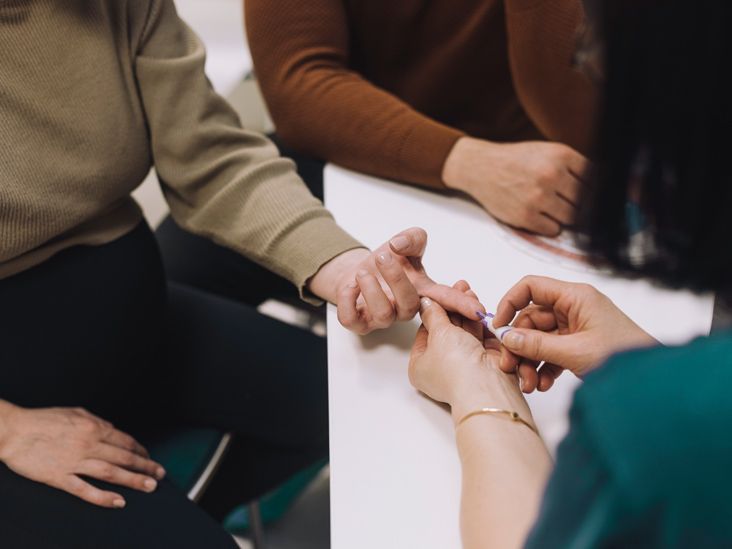Managing your child’s food allergies can be challenging — even when you’re in your own home and in control of ingredients. When you’re traveling, food allergy management for your child can become even more nuanced.
Food allergies are common. They occur when your body reacts to a food particle as if it were a harmful pathogen, mounting an immune response and triggering an allergic reaction.
According to the Asthma and Allergy Foundation of America, approximately 4 million children in the United States have food allergies. Common allergens include milk, eggs, peanuts, tree nuts, fish, shellfish, wheat, soy, and sesame.
When you’re at home, managing your child’s food allergy can become second nature, but when you travel, the unknowns can be stressful. Different countries have different rules about food packaging labels and food preparation, for example, so there’s a greater chance of encountering a trigger food unknowingly or through cross-contamination.
We talked to Katherine Evans, Director at The Allergen Free Kitchen Inc. and mother to a child with food allergies, about keeping her child safe when traveling.
My second youngest child of four was formally diagnosed with their first food allergy very young. They had been having issues with certain foods and would break out in hives. It took numerous allergist appointments at the age of 3 to narrow down that the first of the allergies was to cantaloupe.
While my children had never eaten cantaloupe, they had eaten the fruit around it in fruit salads. This cross-contact caused their first food allergy diagnosis. The reaction in the allergist’s office when they tested for cantaloupe was immediate and severe. The allergist said he had never seen such a quick response in anyone before.
A few years later, the same child developed a severe milk allergy that was coupled with a diagnosis of EoE (eosinophilic esophagitis), an allergic esophagus and cellular allergy.
Our family started on a journey with our four kids to support our child with food allergies, as the child needed to start a SFED (six-food elimination diet) to find out which foods were causing the IgG food allergy reaction in EoE.
In 2021 we started a website as it was really hard to find SFED recipes and recipes that were safe for multiple food allergies. The Allergen Free Kitchen is a site where all the recipes are free from the top nine food allergens.
To be honest, it was a really long time ago, and we traveled so often that it wasn’t that different for us.
At the time, I was a flight attendant for a major airline, so we traveled once every 1 to 2 months. Being in the travel industry really helped as I knew what amenities were common in different hotel chains, what translation apps worked best, and what airline policies were for food allergies.
If I hadn’t been a flight attendant, it would have been much different for me. There would have been a lot of anxiety and a lot of fear for me.
I do remember the first time we went on a cruise with the kids, and it was extremely stressful. Our child with food allergies couldn’t eat at the buffet because every display had mounds of cantaloupe. Even walking through the buffet area made me sweat.
The staff were fantastic, they helped us make sure the chefs knew about the food allergies of our child. We did our research, though. Lots of reading up on the cruise line, what we could bring and couldn’t. Many emails back and forth to make sure there were food options available at every meal and shore excursion.
Through research and an amazing staff experience we didn’t have any issues with our first cruise with food allergies.
Bring your own food and snacks. NEVER expect the airline can accommodate your food allergy. The kitchens are often not optimized for cross-contact at the airline catering companies. Galleys, the plane’s kitchen, are tiny with limited storage and cooking space.
Most airlines will not be able to accommodate multiple food allergies. Many will not guarantee the onboard meal is allergy-friendly, even if you preorder a special meal.
Not only are limited options available, they’re often stored with all the other foods that may contain your food allergen. Galleys do not have the ability to be scoured for cross-contact during the flight due to space, staffing, and time constraints.
Bring more food than you think you’ll need. With air travel, the possibility of missed connections, delays, or other trip interruptions can occur.
Check with TSA
Check with the TSA for what you can and cannot bring. All food must pass through security — no gels, creams, or liquids. There are exceptions for medical needs, medications, and infants in most countries.
Find out what you need to get for a medical exemption if it exists where you’ll be traveling. If you’re traveling to other countries, know what foods can and cannot be brought in through customs and border services before you leave.
Board early for cleanup
Board early to wipe down your seat area. With kids, you can often pre-board; you can also pre-board with medical needs, like food allergies. Use disinfecting wipes to wipe the seat and seat cover, armrests, wall and window, tray table, and television touch screen.
Bring tray table covers, such as press-and-seal plastic wrap or disposable placemats with a sticky side. The covers are great for kids who want to play on the tray table or use it for eating.
Restrooms, or lavs as they are called on planes, can be an area for cross-contact. Many people will eat or drink right before entering the lavs.
Unfortunately, with the tight turnaround times on flights, sometimes due to delays, the planes are not cleaned as well as an allergy parent would like. Deep cleans often happen once a day or less. Most airlines schedule full cleans of the plane once every couple of months.
Inform travel professionals
Depending on the airline and the country the crew is from, they may not be required to be fully trained for an allergic medical event. Often, only cursory first aid is taught for allergies, mostly on how to recognize it.
Flight attendants can only administer medication they are comfortable giving under the direction of their airline’s onboard medical advice service or an onboard medical professional volunteer.
Inform travel professionals about epinephrine device locations
With time being of the essence in allergic reactions, make sure you can easily access your child’s epinephrine devices. Keep them on your person or in luggage you can easily reach under your seat.
Tell the flight attendants about your child’s food allergies. Let them know where your epinephrine auto-injectors are. There’s always a chance a parent panics or is calming the child, and the crew may need to get out the device if instructed by the parent and hand it to them.
Flight attendants are not always trained in how to give an epinephrine auto-injector. Do not assume their allergy first aid is the same as your allergy plan. There are so many different autoinjectors worldwide that what seems like a typical rescue device to you may be foreign to the cabin crew.
Consider cooking appliances in your accommodations
Book a hotel or rental with a kitchen, or bring your own travel-sized cooking appliances. If you’re traveling by plane, size and weight are often a factor. A collapsable slow cooker or kettle is a must-have to help heat up your own food in a hotel.
When you book your stay, request a small fridge and microwave in your room, if kitchenettes are not available.
Spend time online researching the options of what’s available where you’re travelling. Follow local social media pages and join groups in that area to see what is available in stores or restaurants that are suitable for your child’s food allergy accommodations.
If you’re traveling to another country, be sure to check and see what their labeling laws are. Not all countries label for the same allergen standards or even have the same priority food allergens.
Katherine Evans is an allergy-friendly recipe developer at The Allergen Free Kitchen, an allergy-friendly, family-owned website. She and her husband have four kids, one of whom has multiple severe food allergies. Both Katherine and her husband flew as flight attendants for over 20 years each and traveled the world together. They traveled with their kids before and after food allergies, and still do!










